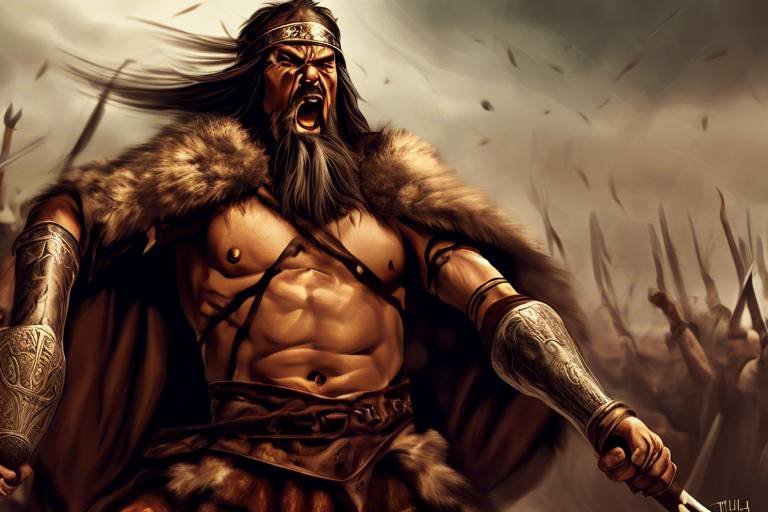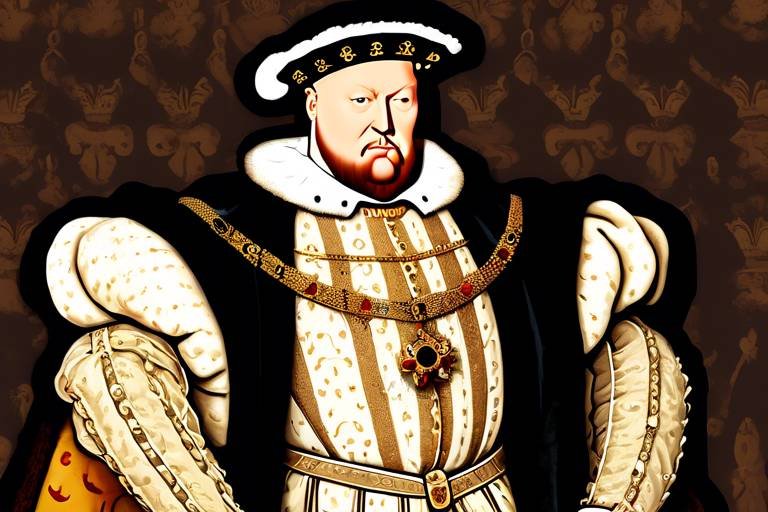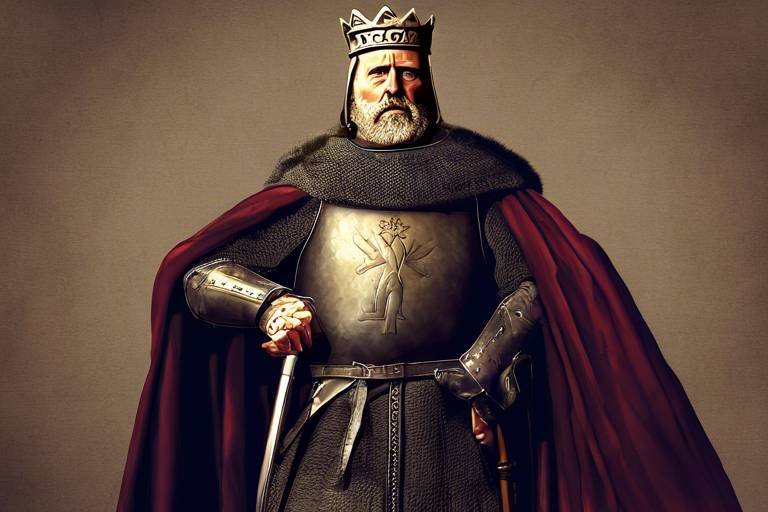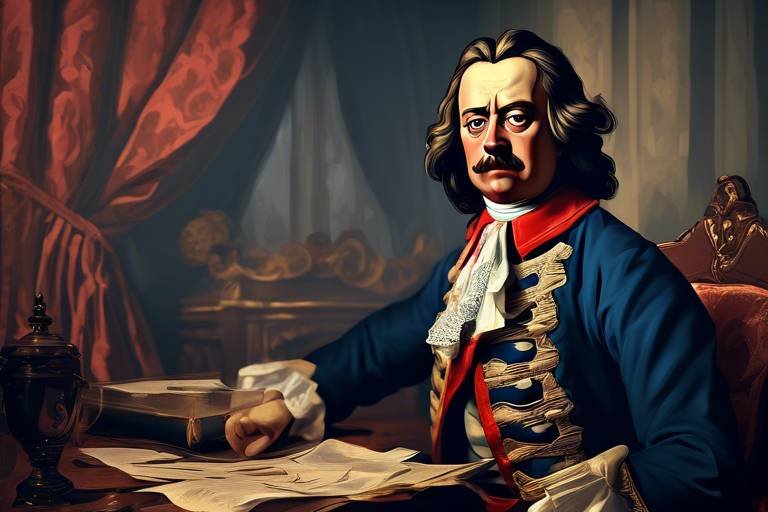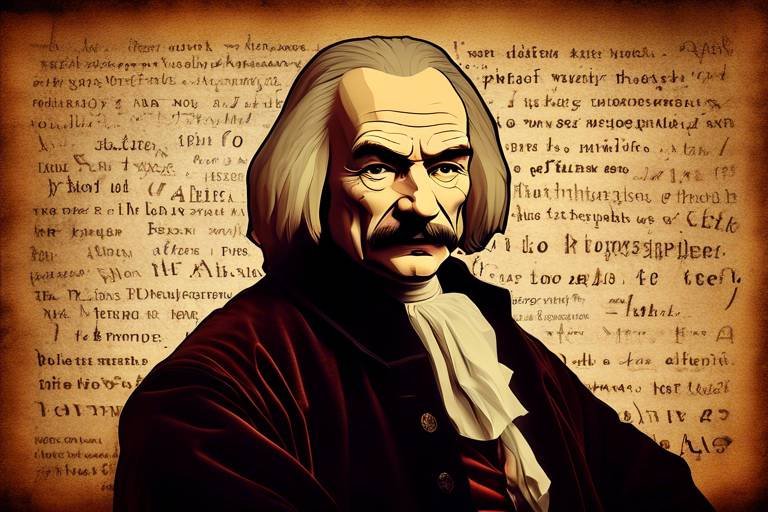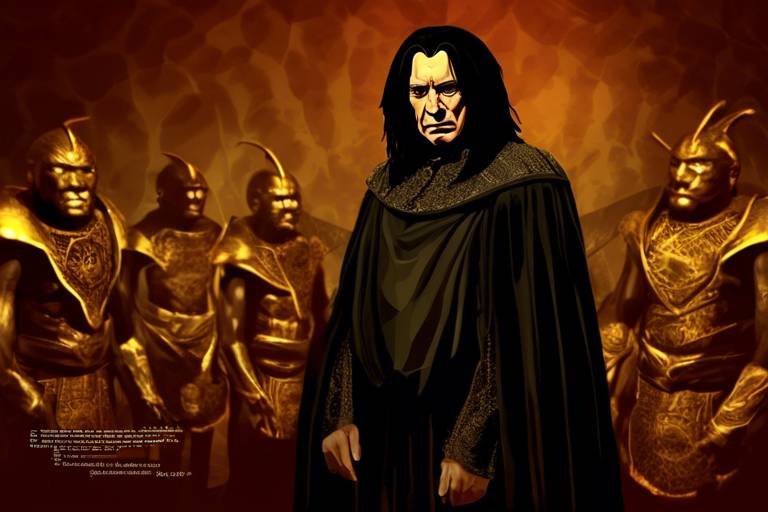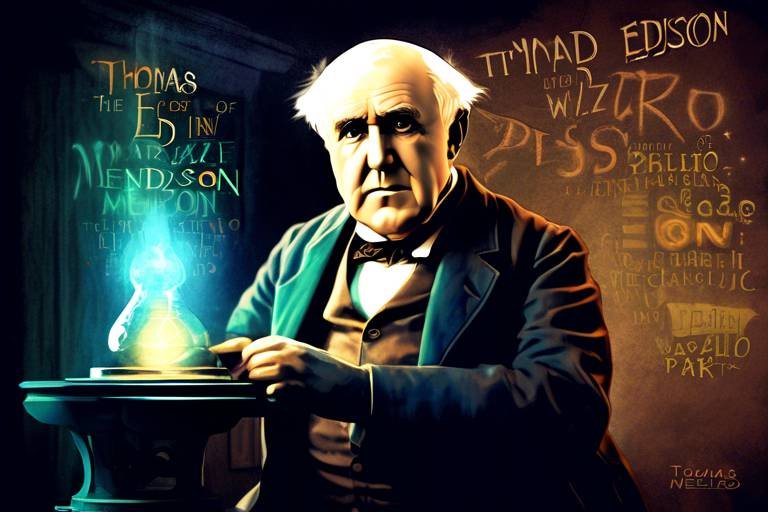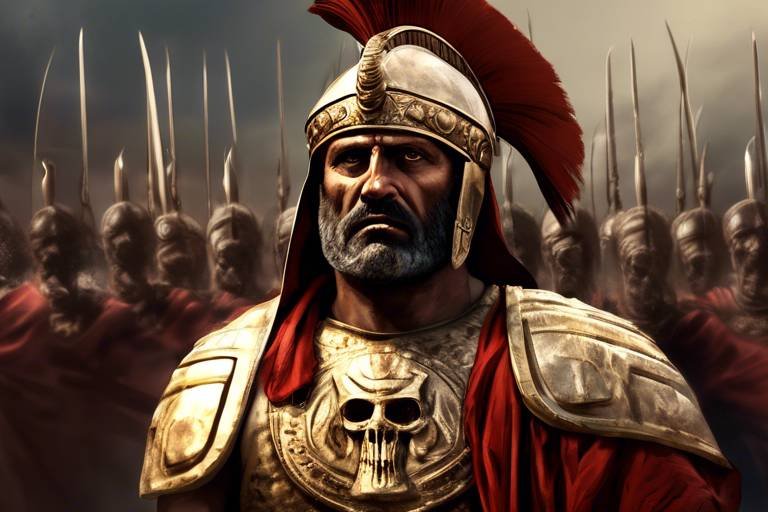Attila the Hun: The Scourge of God
Attila the Hun, often referred to as "The Scourge of God," was a legendary figure whose name struck fear into the hearts of many. Known for his ferocious military campaigns and ruthless conquests, Attila rose to power as the leader of the Huns, a fierce nomadic tribe from the Eurasian steppes. His reign was marked by a series of brutal invasions and strategic alliances that reshaped the political landscape of Europe and left a lasting impact on history.

Early Life and Rise to Power
Attila the Hun, born around 406 AD, was destined for greatness from an early age. Growing up in the harsh and unforgiving environment of the Eurasian steppes, Attila learned the ways of war and survival from his father, King Mundzuk, who ruled the Huns with an iron fist. Attila's upbringing was marked by constant battles for supremacy among the nomadic tribes of the region, instilling in him a fierce determination to rise above his rivals and carve out his own destiny.
As Attila matured, he quickly distinguished himself as a cunning and ruthless warrior, earning the respect and loyalty of his fellow Huns. His natural charisma and strategic acumen set him apart from his peers, leading to his eventual ascension to the throne as co-ruler alongside his brother, Bleda, after the death of their uncle, King Rugila. Together, the brothers embarked on a series of military campaigns that would shape Attila's reputation as a fearsome leader and warrior.
Attila's rise to power was marked by a series of successful conquests and alliances that expanded the influence of the Huns across the vast expanse of Eastern Europe. His ability to forge strategic partnerships with other tribes and exploit the weaknesses of his enemies made him a force to be reckoned with on the battlefield. By the time Bleda met his mysterious end in 445 AD, Attila had firmly established himself as the undisputed ruler of the Huns, with ambitions that extended far beyond the borders of his homeland.
With his newfound power and authority, Attila set his sights on further conquests and the establishment of a vast empire that would rival even the mighty Roman Empire. His early military campaigns against the Eastern Roman Empire and the Sassanid Persians showcased his tactical brilliance and unmatched ferocity in battle, earning him a reputation as the "Scourge of God" among his enemies. Attila's relentless pursuit of power and glory would lead him to become one of the most feared and respected leaders of his time, leaving a legacy that would endure for centuries to come.

Conquests and Empire Building
Attila the Hun's conquests and empire-building were marked by a relentless pursuit of power and expansion. He led his nomadic Hunnic tribes on a path of conquest that struck fear into the hearts of his enemies. Attila's military campaigns were characterized by swift and brutal attacks, leaving a trail of destruction in his wake.
One of Attila's most notable conquests was his invasion of the Eastern Roman Empire in the mid-5th century. His forces ravaged the Balkans and Anatolia, sacking cities and plundering riches along the way. Attila's ability to forge alliances with other barbarian tribes added to his military might, allowing him to launch coordinated attacks on his enemies.
Attila's empire-building efforts extended beyond the borders of the Roman Empire. He expanded his influence into Central and Eastern Europe, establishing a vast domain that stretched from the Danube to the Volga River. Attila's ability to command loyalty from his subjects and instill fear in his enemies solidified his grip on power.
Using a combination of military prowess and political cunning, Attila created a formidable empire that posed a significant threat to the established powers of the time. His ability to inspire loyalty among his followers and instill fear in his adversaries made him a force to be reckoned with on the battlefield.

Barbarian Invasions and Fall of Rome
Attila the Hun's role in the decline of the Western Roman Empire was significant and marked by a series of devastating Hunnic invasions that contributed to the empire's eventual collapse. Attila's relentless military campaigns and strategic prowess posed a formidable threat to the stability of the Roman Empire, leading to widespread fear and chaos across Europe.
One of the most notable events associated with Attila's invasions was the sacking of Rome in 452 AD. Attila's forces marched through Italy, leaving a trail of destruction in their wake as they pillaged and plundered cities along the way. The fall of Rome sent shockwaves throughout the Western Roman Empire, signaling the beginning of its decline and eventual fragmentation.
Attila's ability to mobilize diverse groups of nomadic tribes under his leadership allowed him to launch coordinated attacks on various regions of the Roman Empire, exploiting its vulnerabilities and weakening its defenses. The Huns' swift and brutal incursions struck fear into the hearts of Roman citizens and officials, destabilizing the already fragile political and social fabric of the empire.
As Attila's forces advanced further into Roman territories, the once-mighty empire struggled to mount an effective defense against the relentless onslaught of the Huns. The barbarian invasions led by Attila played a significant role in eroding the power and authority of the Roman Empire, hastening its eventual collapse and paving the way for the emergence of new political entities in Europe.
Attila's legacy as the "Scourge of God" was solidified by his role in the destabilization of the Western Roman Empire, marking a pivotal moment in the history of Europe. The impact of the Hunnic invasions and Attila's ruthless campaigns reverberated for centuries, shaping the course of European history and leaving a lasting imprint on the collective memory of the Roman Empire's fall.

Legacy and Historical Impact
Attila the Hun's legacy and historical impact reverberate through the annals of European history with a formidable resonance. His ruthless conquests and military prowess left an indelible mark on the continent, striking fear into the hearts of many. Attila's relentless expansion of his empire through a series of invasions and strategic alliances reshaped the geopolitical landscape of his time, earning him the ominous title of "Scourge of God."
One of the most notable aspects of Attila's legacy is his portrayal in literature and media. Throughout the centuries, he has been depicted as a symbol of barbarism and savagery, a stark contrast to the refined and cultured image of the Roman Empire. This dichotomy has fueled ongoing debates among historians about the true nature of Attila's impact on world history, blurring the lines between myth and reality.
Moreover, Attila's conquests played a pivotal role in the decline of the Western Roman Empire. The devastating Hunnic invasions, led by Attila himself, hastened the empire's collapse and ushered in a new era of instability and chaos in Europe. The fall of Rome marked a turning point in history, with Attila's name forever etched in the annals of conquest and destruction.
Despite his brutal reputation, Attila's military strategies and tactics have continued to captivate historians and military scholars alike. His innovative use of cavalry, psychological warfare, and siege techniques set him apart as a formidable military leader, earning him both admiration and dread on the battlefield.
Attila's historical impact extends far beyond his death, as his legacy continues to shape our understanding of power, conquest, and leadership. The enigmatic figure of Attila the Hun remains a source of fascination and intrigue, a testament to the enduring influence of one of history's most feared and ruthless conquerors.

Attila's Death and Succession
Attila the Hun's death and the subsequent struggle for power among his successors marked a tumultuous period in the history of the Hunnic Empire. Following Attila's sudden demise in 453 AD, under mysterious circumstances, his empire faced internal strife as various factions vied for control. The lack of a clear successor led to a power vacuum, triggering a series of conflicts and power struggles among Attila's sons and relatives.
Amidst the chaos, Attila's eldest son, Ellac, attempted to assert his claim to the throne, but faced opposition from rival factions within the empire. The ensuing infighting weakened the unity of the Huns and exposed the vulnerability of the once formidable empire. The lack of a strong central authority and the absence of Attila's charismatic leadership further exacerbated the internal divisions.
As the power struggle intensified, the Hunnic Empire began to fragment, with different factions asserting their independence and pursuing their own agendas. The once mighty empire built by Attila through conquest and terror was now on the brink of collapse, torn apart by internal discord and external pressures from rival powers.
Ultimately, the death of Attila the Hun marked the beginning of the end for the Hunnic Empire, as the once dominant force in Eastern Europe disintegrated in the face of internal strife and external threats. The legacy of Attila's reign, characterized by brutality and conquest, was overshadowed by the chaotic aftermath of his death, leaving a legacy of uncertainty and instability in its wake.

Attila's Military Strategies
Attila the Hun was not only a fierce warrior but also a master tactician on the battlefield. His military strategies were innovative and ahead of his time, contributing to his reputation as a formidable conqueror. One of Attila's key strengths lay in his effective use of cavalry, which allowed for swift and decisive attacks that caught his enemies off guard. The Huns' expertise in horseback riding and archery made them a formidable force, capable of striking with speed and precision.
Furthermore, Attila employed psychological warfare tactics to instill fear in his enemies and weaken their morale. He often used terror as a weapon, leaving a trail of destruction in his wake to intimidate those who dared to oppose him. By cultivating a reputation for ruthlessness and brutality, Attila ensured that his enemies thought twice before challenging him.
Another aspect of Attila's military strategy was his adept use of siege techniques. He understood the importance of fortifications in warfare and employed various methods to breach enemy defenses, such as siege towers, battering rams, and tunnels. Attila's ability to lay siege to heavily fortified cities and strongholds showcased his strategic prowess and determination to achieve victory at any cost.
Overall, Attila's military strategies were a combination of speed, surprise, and overwhelming force. His use of cavalry, psychological warfare, and siege tactics set him apart as a brilliant military commander whose legacy continues to fascinate historians and military strategists to this day.

Personal Life and Leadership Style
Attila the Hun, known for his fierce reputation on the battlefield, also had a complex personal life and leadership style that shaped his rule. Despite his image as a ruthless conqueror, Attila was also a family man, with multiple wives and children. His ability to balance his personal relationships with his military ambitions showcased a different side to the feared leader. Attila's leadership style was marked by a combination of charisma, strategic thinking, and a keen understanding of his followers. He inspired loyalty and fear in equal measure, creating a sense of unity among the diverse tribes that made up the Hunnic Empire. Attila's leadership was authoritarian, with absolute power centralized in his hands, allowing him to make swift and decisive decisions that propelled his conquests forward.

Historical Controversies and Modern Interpretations
Historical controversies surrounding Attila the Hun have long intrigued historians and sparked debates among scholars. One of the most contentious issues is the extent of Attila's impact on the fall of the Western Roman Empire. While some argue that Attila's invasions directly contributed to the empire's collapse, others believe that the decline was already inevitable due to internal weaknesses and external pressures.
Another point of contention is Attila's portrayal in historical sources, which often depict him as a savage and bloodthirsty barbarian. Modern interpretations, however, seek to provide a more nuanced understanding of Attila's motivations and actions, highlighting his strategic military genius and political acumen.
Furthermore, the legacy of Attila the Hun continues to be a subject of debate in popular culture and academia. Some view him as a ruthless conqueror who brought devastation wherever he went, while others see him as a complex figure who played a significant role in shaping the course of European history.
In recent years, there has been a renewed interest in reevaluating Attila's legacy and exploring his impact on the development of medieval Europe. New archaeological discoveries and scholarly research have shed light on previously overlooked aspects of Attila's reign, challenging traditional narratives and prompting a reexamination of his place in history.
Frequently Asked Questions
- Who was Attila the Hun?
Attila the Hun was a fearsome and ruthless leader of the Huns, known for his military prowess and brutal conquests that struck fear into the hearts of many across Europe. He was a formidable warrior who led his people in numerous campaigns, leaving a lasting impact on history.
- What were Attila's military strategies?
Attila employed innovative military tactics such as the effective use of cavalry, psychological warfare, and siege techniques that made him a formidable adversary on the battlefield. His strategic brilliance and military acumen contributed significantly to his success in conquests.
- How did Attila's reign affect the Roman Empire?
Attila's relentless invasions and campaigns played a significant role in the decline of the Western Roman Empire. His devastating attacks and the pressure he exerted on the empire contributed to its eventual collapse, marking a turning point in European history.
- What was Attila's leadership style like?
Attila was known for his ruthless leadership style characterized by ambition, ruthlessness, and a relentless thirst for conquest. He commanded loyalty and fear from his followers, instilling a sense of power and authority that allowed him to build a vast empire through force and intimidation.
- What is the legacy of Attila the Hun?
Attila's legacy is one of fear and awe, with his conquests leaving a lasting impact on European history. His portrayal in literature and media as a fierce and powerful warrior continues to shape perceptions of him, while his military strategies and leadership style are studied to this day.

